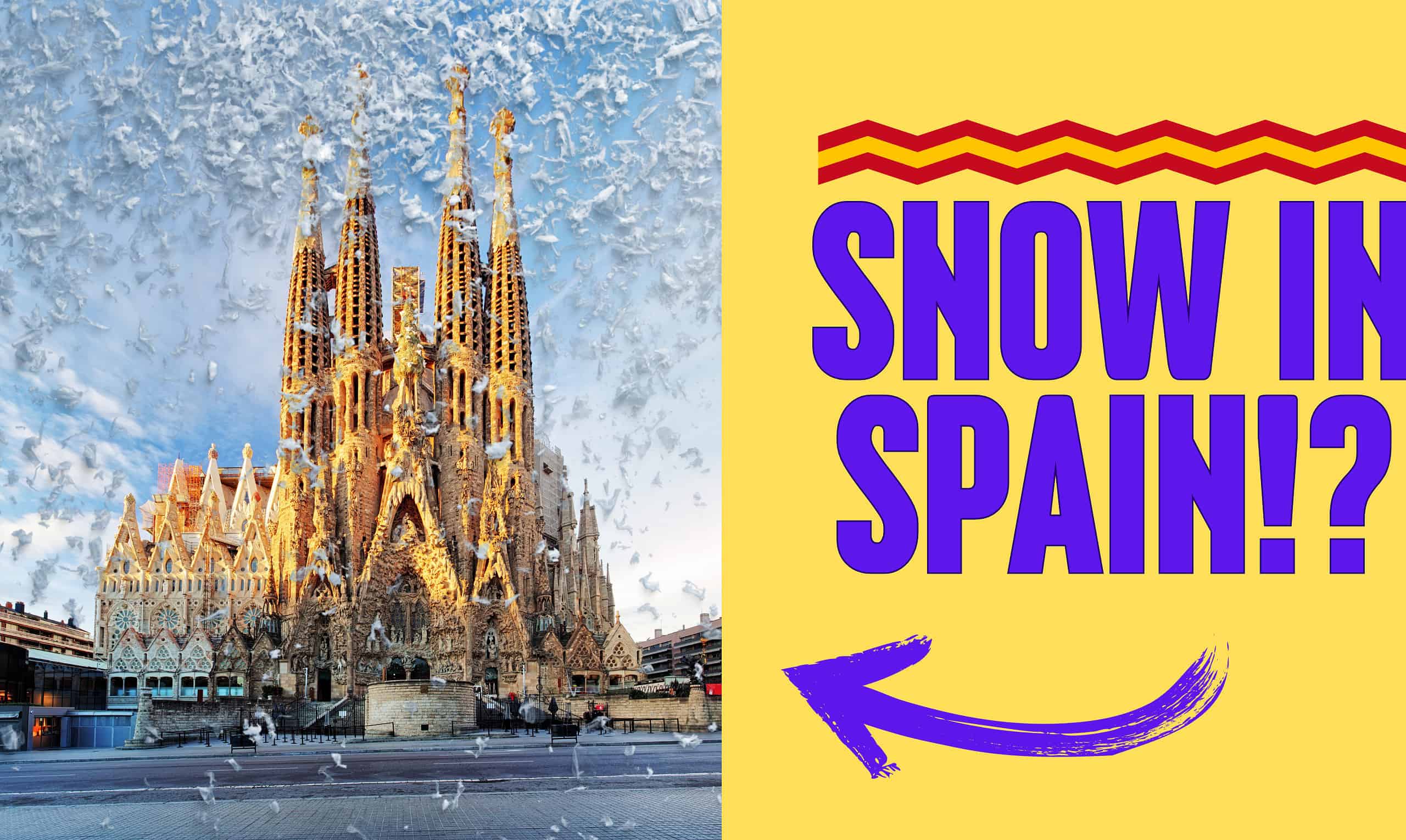Yes, it snows in Spain in the Atlantic and mountain regions which are colder in winter and are at higher elevations. Snow is found in the central and northern regions, specifically in the Pyrenees and Sierra Nevada mountain ranges. Cities in the Castile-León region get the most snow such as Soria which is 3,494 feet above sea level in the north-central region and averages 55 inches annually.
Where Does It Snow?
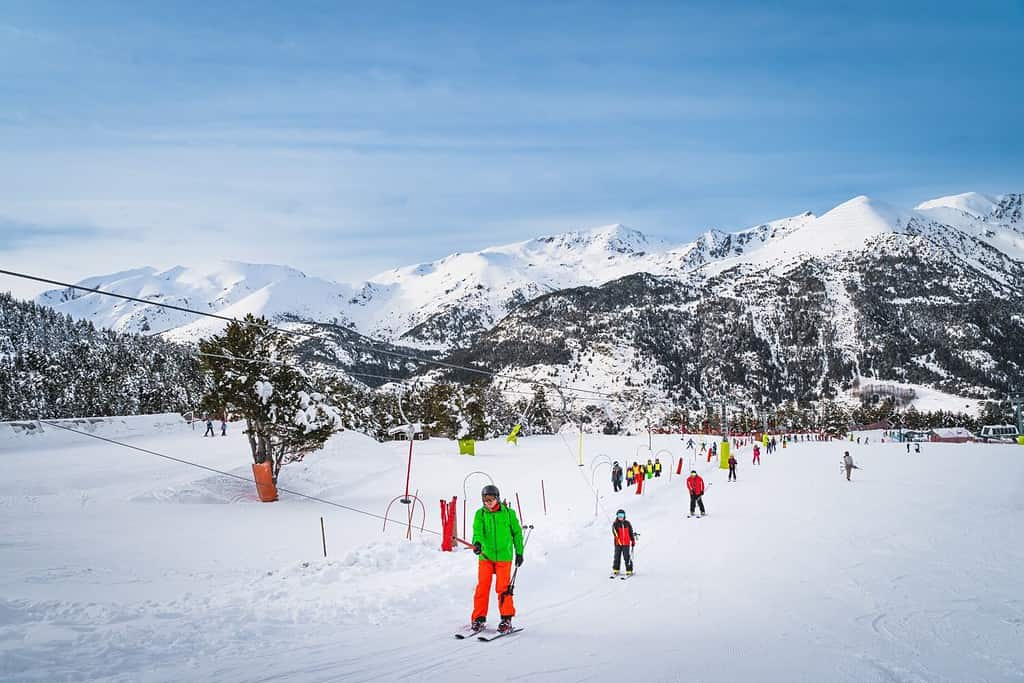
The Spanish Pyrenees experience heavy winter snowfall.
©Dawid K Photography/Shutterstock.com
Most snowfall occurs in cities of the Castile-León region. Major cities such as Barcelona and Madrid see snow occasionally and sometimes in the Canary Islands on the higher mountain regions at 5,250 feet. The snowiest winter months are between November and March, January being the heaviest. The Sierra Nevada mountains and the Spanish Pyrenees experience the heaviest snowfall.
| Snowiest Cities | Annual Snowfall (Inches) |
|---|---|
| Burgos | 42 |
| Ávila | 52 |
| Soria | 55 |
| Reina | 54 |
The Snowy Months in Spain
November is the start of the winter season in Spain and snow is uncommon other than a dusting late in the month in the Pyrenees and at higher elevations.
December brings a higher chance of snow, particularly in the mountains and northern regions.
January temperatures reach their lowest bringing more snow, especially in central Spain, parts of Andalucia, and the Pyrenees.
February snow is lighter but it continues to fall much to the delight of local ski resorts.
March brings a change in seasons and things begin to thaw out except for in higher elevations.
| November | December | January | February | March |
|---|---|---|---|---|
| 1 | 3 | 5 | 4 | 3 |
Why Does it Snow in Spain?
The confluence of altitude, geography, and the ocean create an environment for snow to fall in Spain. As a result, higher elevations with cooler temperatures are prone to snow which is why the Pyrenees and Sierra Nevada range regularly get snowfall. A variety of microclimates exist in the country from flat plains to hilly areas and soaring mountains. The coastline brings moisture to the air and when mixed with cold temperatures turns it into snow.
Does it Snow in Spain? Here are Some of the Snowiest Cities
Harsh winters dominate the country’s mountain towns. Indeed, these 14 cities get the most snow in Spain:
Ávila
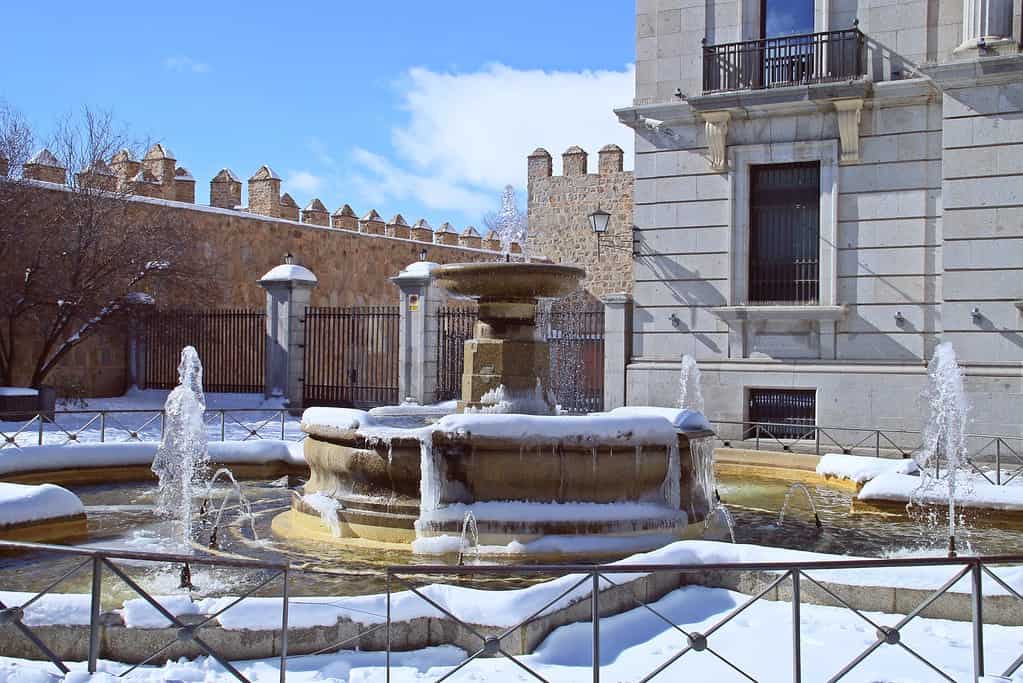
Ávila is filled with medieval buildings and history.
©angeluisma/iStock via Getty Images
This ancient walled city from the 11th century is filled with medieval buildings and history. It is in the Castile-León region which experiences snowfall between December through March with an average of about 20 snow days a year. The city is at 3,700 feet above sea level and is surrounded by the Sierra de Gredos and Sierra de Guadarrama ranges. For that reason, it is the best place to see snow in the country and it is only 2 hours away from Madrid. Snowfall here can be heavy, for example in January 2018 they received 12-16 inches.
Burgos

The Cathedral of Burgos is covered in snow during the winter.
©Cavan Images/iStock via Getty Images
Burgos province was founded in 884 AD. This beautiful city of 175,821 is filled with historical sites, specifically its Gothic cathedral. Located in the Castile-León region their snowfall is between December and March, January being the heaviest month.
Cuenca
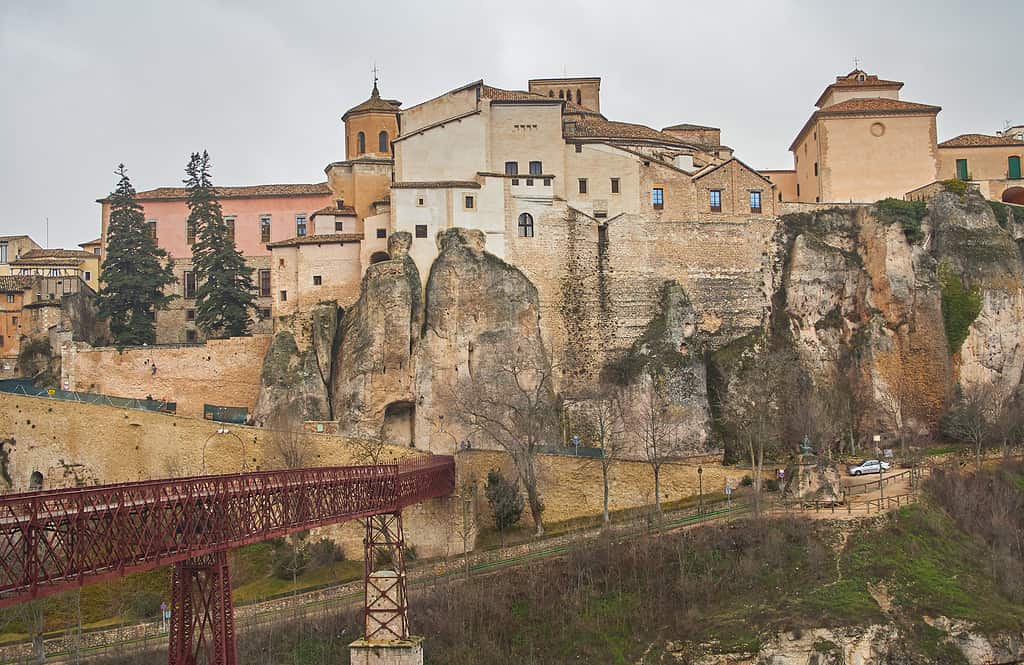
The San Julian bridge and a view of the homes built into its rocky terrain.
©Nedrofly/iStock via Getty Images
Cuenca in the Castilla-La Mancha area is located on a hill and uniquely features homes built into the surrounding rock. At an altitude of 3,116 feet snowfall is common in the winter months. The highest mountain range here is Cerro de la Mogorrita Mountain.
Huesca

This medieval village is in the foothills of the Pyrenees.
©Ana del Castillo/iStock via Getty Images
This medieval village is in the foothills of the Pyrenees at 1,640 feet above sea level. It is home to the second oldest park in Spain, Ordesa y Monte Perdido National Park located in the Aragonese Pyrenees. The Formigal-Panticosa ski resort with 111 miles of slopes is nearby.
León

The town of León was founded in the 1
stcentury.
©Jsalinero/iStock via Getty Images
León was founded in the 1st century in the Castile-León region and is 2,746 feet above sea level. As a result, snow falls frequently in winter months and averages around 13 snow days annually, or about 4 inches.
La Molina
La Molina in Catalonia is close to the French border and is at 5,577 feet above sea level. This popular winter destination has around 37 miles of ski slopes, a ski jump, and spas.
Pamplona
Pamplona in the Navarre region is a popular winter destination and is famous for its pilgrimage route to the Way of St. James and the running of the bulls. The city averages around 10 days of snow annually.
The Pyrenees

There are over 200 peaks reaching heights of over 9,843 feet.
©PhotosTime/iStock via Getty Images
This mountain range separates Spain from the rest of Europe and is mostly in Spain, but part is in France and Andorra. In fact, it runs from the Atlantic coast to the Mediterranean Sea with over 200 peaks reaching heights of over 9,843 feet resulting in snow for up to 6 months of the year.
Reina
Reina is located in the Cantabria province and is one of the snowiest places in Spain with 54 inches of snowfall annually. On average it snows about four to five times a month between December through February.
Salamanca

This ancient source is located in San Felices de los Gallegos in Salamanca.
©Estellez/iStock via Getty Images
Salamanca in the Castile-León region is known for its cuisine, culture, and educational institutions. It is 2,624 feet above sea level and near the Sierra de Béjar-La Covatilla ski resort with 17 miles of ski slopes.
Segovia

Old Roman ruins display the famous aqueduct looming above Segovia.
©carterdayne/iStock via Getty Images
The historic city of Segovia in the Castile-León region is famous for its Roman aqueduct which rises above the city. At 3,287 ft above sea level, it averages 13 snow days annually.
Sierra Nevada
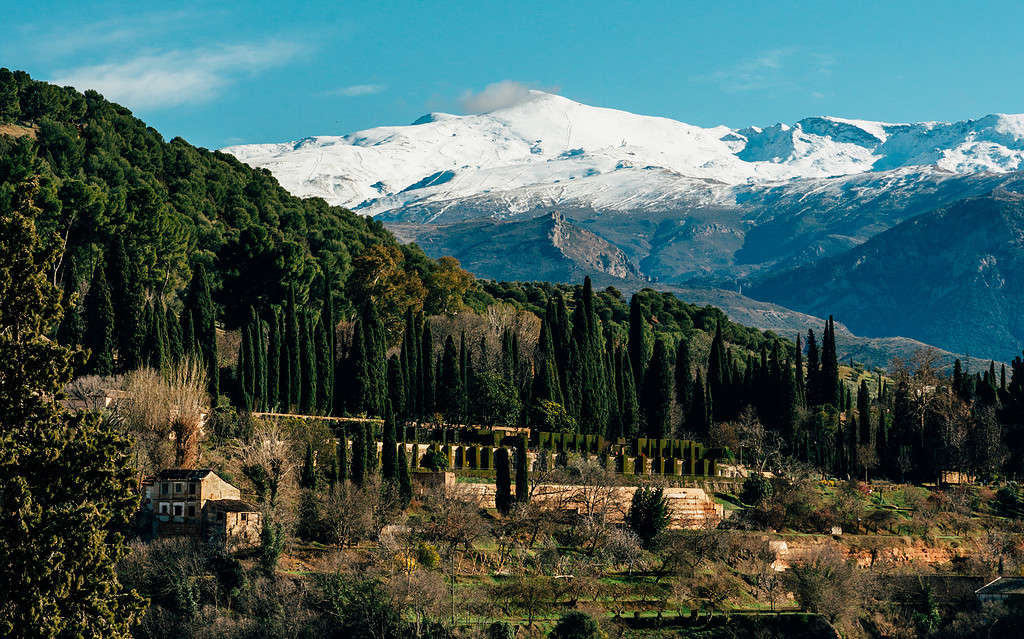
The Sierra Nevada is an Andalusian Mountain range.
©BrasilNut1/iStock via Getty Images
The Sierra Nevada is an Andalusian Mountain range and the highest point in the Iberian Peninsula. It is also the snowiest place in the country with an altitude of 11,423 feet at Mount Mulhacén and 16 peaks at 9,842 feet above sea level. In addition, it can snow here nine months of the year. There are around 53 miles of ski slopes here. Just 50 miles from Grenada, it has one of the best ski resorts in Europe. Snowfall is at its highest between February and March. In addition, nearby Mirlo Blanco Park offers many snow activities.
Soria
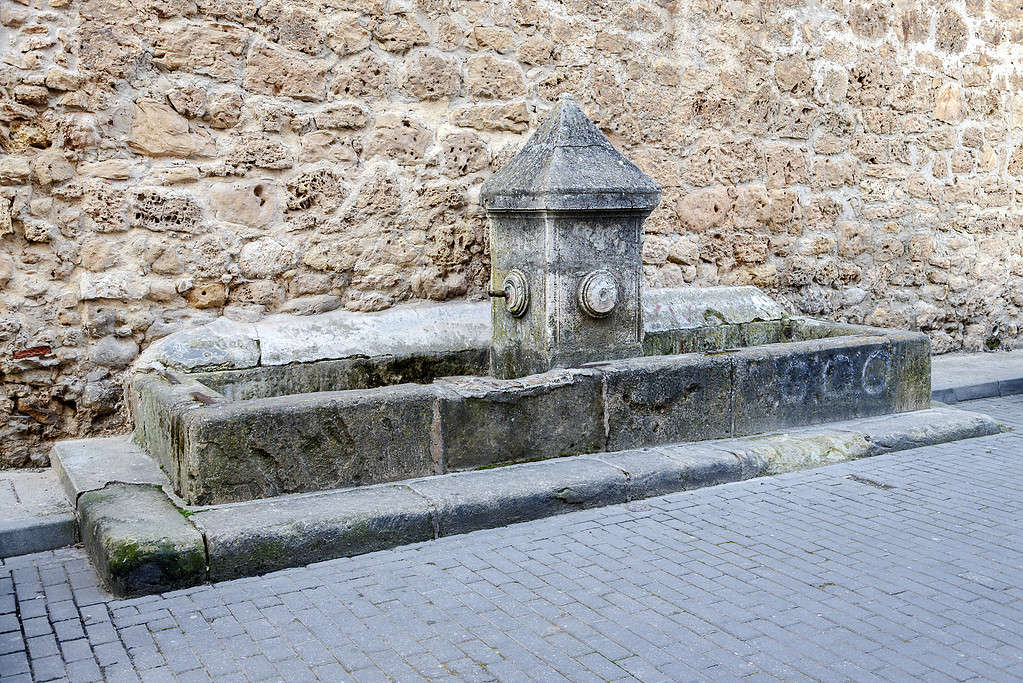
An old fountain and drinking trough in Burgo de Osma, Soria.
©KarSol/iStock via Getty Images
The historic town of Soria in the Castile-León region is 3,494 feet above sea level and is known for its Plaza Mayor. In fact, Soria is one of the snowiest cities in Spain with an average snowfall of 55 inches annually and around 21 snow days a year.
Teruel
This beautiful town is famous for its Mudejar architecture. Teruel is 3,001 feet above sea level and has two ski slopes in the Valdelinares and Javalambre areas.
Val d’Aran
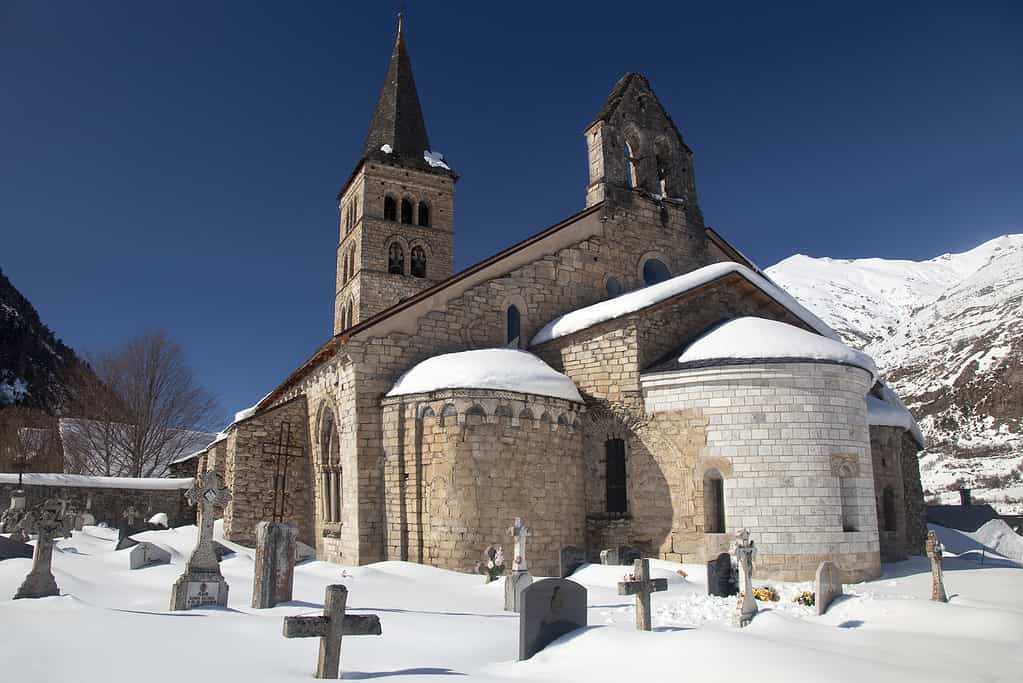
Near the border of France is the town of Val d’Aran in the Aran Valley.
©Conchi Martínez/iStock via Getty Images
Val d’Aran in the Aran Valley is at the far end of Catalonia on the border of France. It has various peaks over 6,562 feet, the highest is 9,888. The Baqueria-Baret ski area is the second-largest resort in the Pyrenees and a popular winter destination.
Finally
Indeed, it does snow in Spain! Many of these snowy medieval towns have UNESCO designations making them wonderful places to explore and learn about history as well as to enjoy their snowy peaks.
Thank you for reading! Have some feedback for us? Contact the AZ Animals editorial team.

